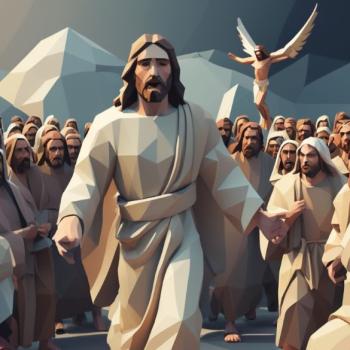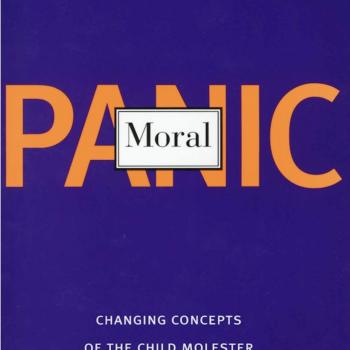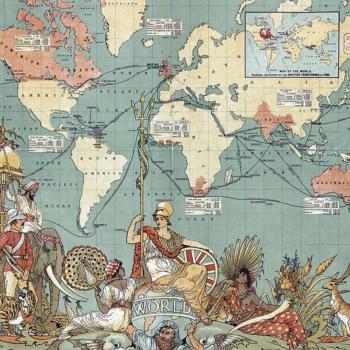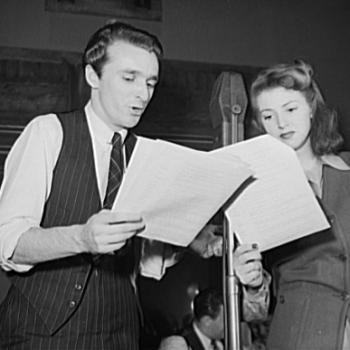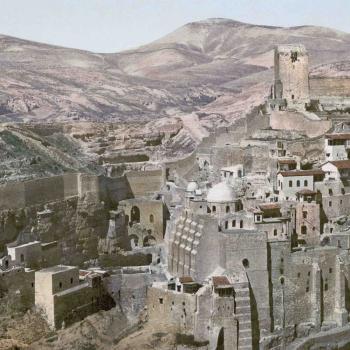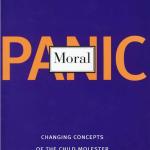In a very short period in the second century BC – mainly between 170 and 140 – Jewish thought and religion changed swiftly and fundamentally, creating a world that is familiar to later historians from Early Christianity and Rabbinic Judaism. I have already described some of the scriptures that emerge from this world, but let me here explore some of the religious themes that now rose to central significance.
By way of background, we might look at the wider processes in Judaism as described by a historian like Shaye Cohen (see for instance his From the Maccabees to the Mishnah). During the Second Temple period, we see a shift from a religion based wholly on the collective (people or family) to the individual. That meant at least some movement from the public sacrificial cult to more individual and even private forms of practice, in which people prayed, studied and meditated. Linked to that were new concepts of divine justice, of theodicy. In the new vision, God rewarded and punished individuals rather than collective groups, and punished individuals according to their own sins, not those of ancestors.
If those individualistic trends were not new in 170, contemporary events and struggles now gave them a massive and sudden stimulus.
One newly prominent theme is the afterlife. In part, this resolved the ethical dilemma of seeing so many heroic figures dying during the Maccabean wars, as soldiers or martyrs. Did these individuals really have no hope of reward or vindication, beyond the collective good of the people? And of course they did, if you assumed an afterlife, and a Resurrection to Judgment. In 2 Maccabees (?late second century BC?), a young man is being tortured to death for refusing to eat pork, in the events leading up to Judah’s revolt. He addresses his Greek tormentors: “With his last breath he said: ‘You accursed fiend, you are depriving us of this present life, but the King of the universe will raise us up to live again forever, because we are dying for his laws’.”
Or, to quote Daniel 12.2-3: “Multitudes who sleep in the dust of the earth will awake: some to everlasting life, others to shame and everlasting contempt. Those who are wise will shine like the brightness of the heavens, and those who lead many to righteousness, like the stars for ever and ever.”
Closely related to that is the notion of martyrdom. Hebrew literature certainly had its stories of individuals who served God faithfully at the cost of their lives, but martyrdom and its rewards now became a central concern in ways that would be instantly comprehensible to early Christians. 2 Maccabees lauds the righteous who lay down their lives for the wider community, in acts of vicarious sacrifice
Dualistic theories also gained traction in these years. I have already discussed the influence of Persian and Zoroastrian ideas in Judaism, but these themes acquired new plausibility during the revolt, when the Seleucid king Antiochus IV so evidently represented a wholly evil figure rebelling against God, God’s people and his Temple.
But notions of Dualism and cosmic war also offered a radical new way of interpreting conflicts and wars within the Jewish nation, which were so frequent in the Hasmonean years. Most of those struggles occurred within a sacred context, elevating the issues involved to the level of cosmic struggle. In most conflicts, after all, control of the Temple was a primary goal. In such a setting, adversaries became deadly enemies of God as well as humanity, to the point that activists excluded their foes from the true ranks of Israel. Might the Hasmoneans even be worse than Antiochus?
The conflict that spawned the Dead Sea community began as a struggle of elites, of a Wicked Priest and a Teacher of Righteousness, but soon escalated to cosmic proportions. The sectarians claimed to be the true sons of Light, and the official Temple cult was in the hands of these false Israelites, the Children of Darkness. That damning label extended both to Gentiles, and to enemy Jews. The conflict would rage until it culminated with a divine intervention, a Judgment.
The Qumran sectaries never came close to consigning the material creation to the world of Darkness, but others did. Such Dualistic themes profoundly influenced the Mediterranean world in early Christian times, when some believers interpreted the Messiah as an envoy from the realm of Light and spirit, sent to liberate those trapped in the world of sin, Darkness and matter.
Finally, I have already remarked on the rise of apocalyptic literature. Works like Daniel illustrate a massive new taste for terrifying descriptions of the wars and disasters that would destroy the present world and usher in God’s final glorious rule. The apocalyptic framework was endlessly malleable, and could be adjusted to accommodate each new horror or portent – the coming of the Romans, Parthian wars, and ultimately even the fall of the Second Temple.
To illustrate the speed of religious change in this era, I offer a purely imaginary individual, a Judean man born in 190 BC, who lived his full appointed Biblical span of life, three score years and ten, until he died in 120. Perhaps he even served as a warrior in the Jewish revolt of the 160s. During his lifetime, the great Hellenistic Empire into which he was born had virtually ceased to exist, and he ended his days in an independent, expansionist Jewish kingdom. The religious world at the time of his death had changed so dramatically from that of his youth as to be almost unrecognizable. In the years of this maturity – between 170 and 140 or so – he had lived through one of the great tectonic shifts in religious history.






